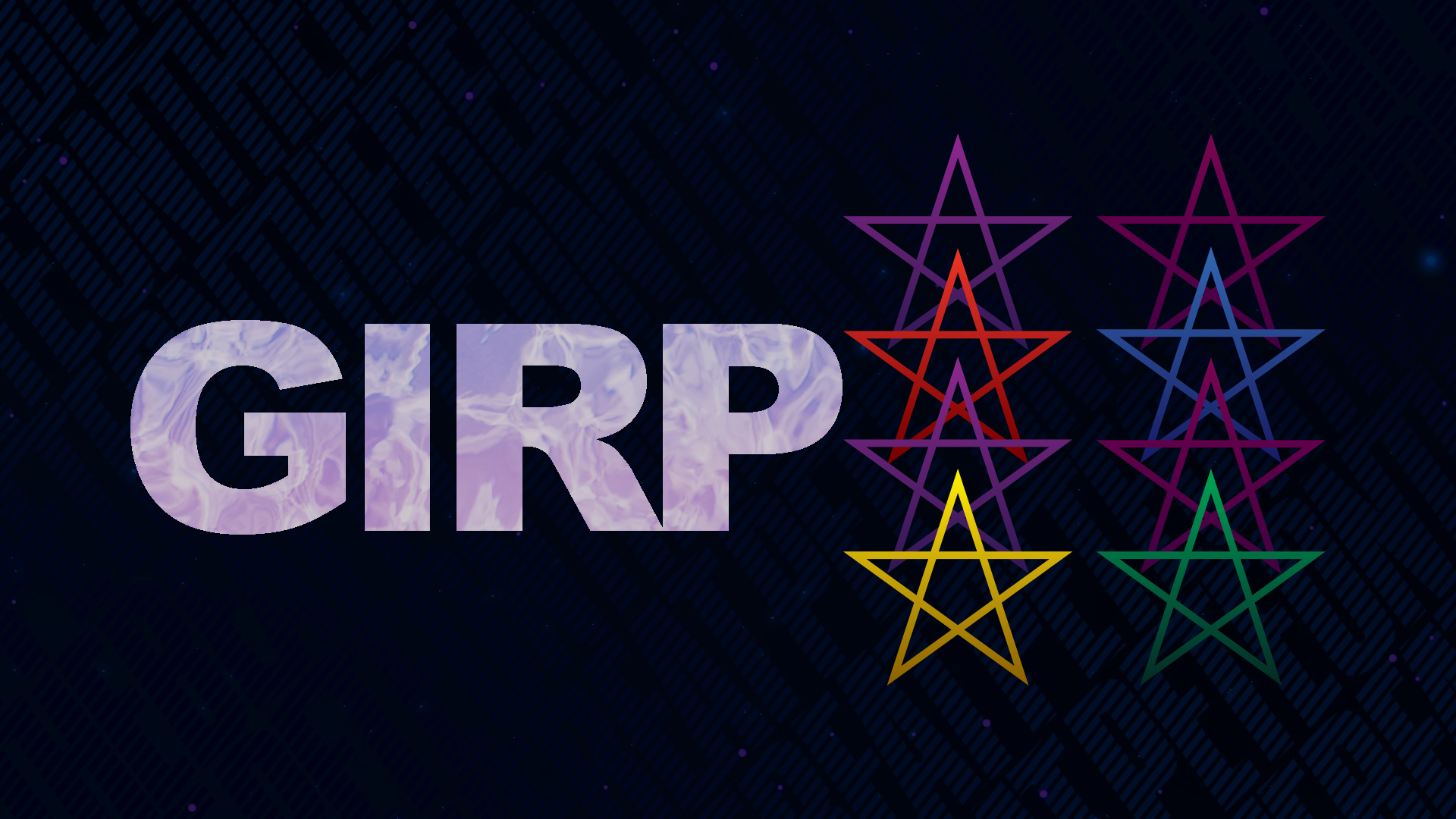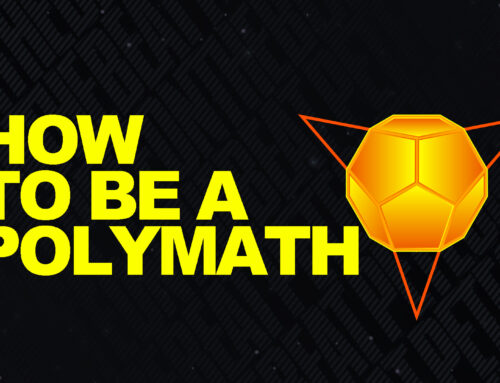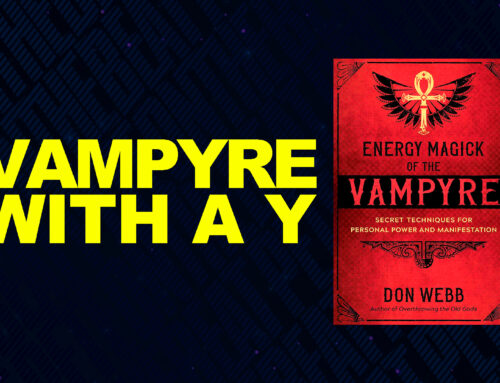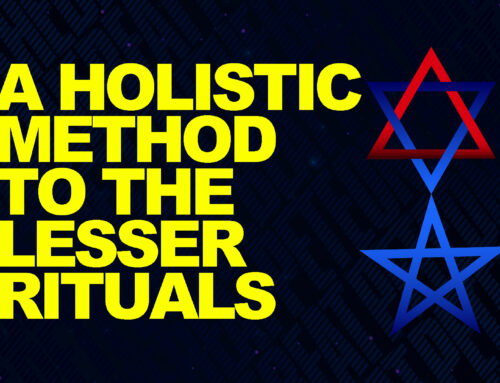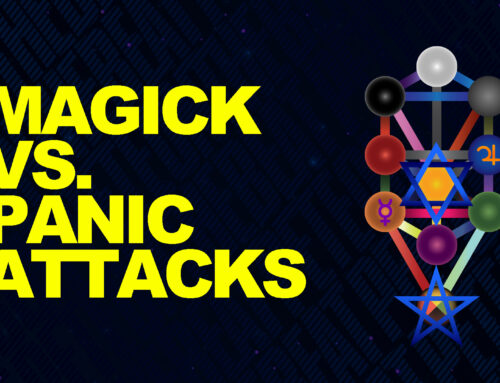Introduction
As advocated in books on Thelema, the Greater Invoking Pentagram Ritual (GIRP) is the technique to learn after LRP or the Lesser. In a nutshell, GIRP is a much simplified Supreme Invoking Ritual of the Pentagram (SIRP) — a thorough examination of which you can watch on this channel. Also, starting and ending with a QC, GIRP can be used for both practical and mystical work.
A less souped-up SIRP
Though following the same structure, GIRP doesn’t include sigils and zodiac signs; it is also purely Hebrew, according to most sources. Nevertheless, some considered it essential since engaging deeper aspects of the Elemental Universe and preparing for rites like SIRP and OBW. In fact, depending on who you ask, and like Crowley’s Liber Vel Reguli, those are sometimes referred to as ‘souped-up’ or ‘modified’ versions of GIRP.
Lesser, Greater, Supreme
As mentioned in my SIRP video and article, Greater or Supreme doesn’t mean ‘cooler’ or somewhat more ‘special.’ It translates into specific or particular, whereas ‘lesser’ is general, used for unimportant invocations. It isn’t one over the other but utilizing both as inseparable segments of the same system. I.e., the essential tools in your toolkit for building the thought forms.
Attuning the Field of Operation
The ‘lesser’ rituals set the space, casting a magickal circle by establishing a field of operation, as discussed in my two-part series on the subject (1 & 2). The Greater and Supreme rituals attune that space to a specific force (or current) so the appropriate conjurations can be performed and a charge of intent delivered.
Spirits
Like SIRP, GIRP is commonly used for working with one of the Elemental Kings: Djinn, Paralda, Nicksa, and Ghob. Also, for consecrating elemental weapons and other objects, such as attuning your daily life to a specific force. Yet, unlike SIRP, it cannot be used for working with the Names of the tablets, like, for instance, the seniors at each center.
Forms and Variations
Also, like SIRP, GIRP has five variations or forms. Four correspond to the paths of the elements, whereas the fifth is to Malkuth, as it’s the four elements version.
Identical to the planets, the elements also attribute to paths and sephiroth. The only difference is that while the Planets have individual spheres, the Elements ‘kinda share’ Malkuth, the 10th sephira encompassing the physical reality. All forms of GIRP can be GBRP or the Greater Banishing Ritual of the Pentagram.
Components
Like SIRP, GIRP repeats the same combinations of divine names, god forms, and pentagrams in all four quarters. Yet, it’s usually recommended to begin with the Malkuth version, as that’s more balanced. Plus, it teaches all pentagrams and gestures, which is quite handy. And according to Scott Stenwick, it can be used for obtaining the vision of your HGA, as it’s similar to Liber Vel Reguli, which Crowley recommended for that.
Directions
Depending on your LRP, the Malkuth version either uses the traditional winds model or, most often, swaps out the places of the Fire and Air, placing the elements based on their density, as shown in my Circles of Magick videos and sources like Rev Jeff Rhoades Hermetic Qabala. Either way, GIRP begins in the East, going clockwise. And all its elemental variations remain the same no matter the model you use.
Spirit Pentagrams
Since Spirit is both ‘active’ and ‘passive,’ the Golden Dawn and Thelema use active and passive Spirit pentagrams. Some of their intricacies are discussed in my videos on SIRP, the Fields of Operation (1 & 2), and Circles of Magick (1 & 2). Generally, Spirit or Quintessence isn’t an element, and It “rather” expresses itself through the elements’ order or equilibration. Hence why Spirit-invoking pentagrams are also called ‘equilibrating.’
Active and Passive
Starting at the lower right angle, the ‘equilibrating’ or spirit-active pentagram is traced in bright violet. It animates from Fire to Air, Water, and Earth, following the density principle. Commencing at the lower left ray, the ‘equilibrating’ passive pentagram is dark violet. It animates from Earth to Water, Air, and Fire, (also) expressing the density principle.
Spirit Pentagrams. Names
Completing each spirit pentagram is followed by the appropriate grade signs. According to most sources, that’s rending or opening the veil. According to others, the LVX signs, or the LVX, preceded by rending the veil. And according to the third, all or some combination of that follows the sign of the enterer, Horus.
Spirit Pentagrams. Grade Signs and God Forms
While SIRP keeps those for the Spirit’s spokes wheel, GIRP employs ‘EHEIEH’ and ‘AGLAH’ for the active and passive pentagrams. Meaning ‘I AM’ and ‘You are Mighty Forever Adonai,’ these names are vibrated simultaneously while the stars are traced.
Symbols and Living Beings
When charged, symbols become living beings. Considering that you figure out what combination does that best. Since opening the elemental universes, doesn’t it makes sense to open and not close the veil, as shown in some books for the passive spirit pentagrams? Let me know what you think of that. Otherwise, I suggest opening for invoking and closing for banishing, as Scott Stenwick, Jeff Rhoades, and the Ciceros recommend. After all, what ‘invoking’ really is is attuning or opening yourself to something.
Elements
Besides the density principle, Golden Dawn and Thelemic pentagrams follow the rule of ‘invoke toward and banish from’ the point where the element is attributed. Traced in bright red, the Fire invoking pentagram commences at the spirit ray going clockwise. The one of Air is bright yellow, proceeding counterclockwise from the upper left. The Water invoking pentagram is blue marine, continuing clockwise from the upper right. Lastly, the Earth invoking pentagram is dark green or Black and starts from Spirit going counterclockwise, like in LRP.
Air and Water
Some people get perplexed as the Air invoking pentagram resembles the Water banishing pentagram due to sharing the same direction. You can avoid such confusion by associating appropriate colors, god names, and quarters of the circle.
Qabalistic Worlds
Like the SRP, GRP mainly targets the ‘formative,’ or ‘Yetziratic’ world. As mentioned in my SIRP video, you can think of that as the scaffold above or beyond our world of action, Assiah. Or even as the front-end code making up the pages or websites that are your life. According to some sources, and depending on which diagram you look at, the effects of GRP and SRP can be felt in the lower aspects of the world of ideas, Bryiah.
Elements and Divine Names
The reason is the words of power these rites employ with their elemental pentagrams. Like those of the Spirit pentagrams, these names are vibrated in unison while the pentagram is traced. For Fire, that’s Elohim, which is shortened from Elohim Gibor, the name of the fiery Geburah, the sphere of Mars. For Air, it’s Jehova (or YHVH for spellers) coming from Jehova Eloah VaDaath, the name associated with the mystical aspect of the Sun, Tiphereth. Water аssociates with El, which is the name of Chessed, the sphere of Jupiter. Earth does that with Adonai, shortened for Adonai Ha-Aretz, the name of Malkuth, and the physical Universe.
Yetzirah and Briah
Whether GRP and SRP have that much impact might be debatable, as some sources consider Bryiah to comprise Chessed, Geburah, and Tiphereth, others of Binah, Chessed, and Geburah, and third only Binah, as found in Thelemic books.
Elements and God Forms
After you complete each elemental pentagram, you assume the appropriate god form. For Fire, that’s the sign of Philosophus or ‘4=7,’ the god form of the goddess ‘Thoum-Aesh-Neith.’ For Air, it’s the one of Theoricus or ‘2=9,’ the god form of ‘Shu supporting the sky.’ For Water, it is the sign of Practicus or ‘3=8,’ the god form of the goddess ‘Aramoth.’ For Earth, it is 1=10 or ‘Set Fighting.’ Depending on who you ask, that’s given as it is or follows the sign of the enterer from LRP.
Archangels
Following LRP’s structure, some sources finish GIRP by conjuring the archangels. Others insist on calling only the force you will be working with. Calling on the archangels may make little sense, as you already did that when setting the space. But you can think of that as representing the four aspects of the force you are working with.
Fire Quadrant
- Trace an equilibrating ‘active’ spirit pentagram vibrating ‘EHEIEH.’
- Open the veil, give the LVX signs, or precede that with the sign of the enterer.
- Trace an invoking Fire pentagram vibrating ‘Elohim.’
- Assume the god form of 4=7 or precede that with the sign of the enterer.
Air Quadrant
- Trace an equilibrating ‘active’ spirit pentagram vibrating ‘EHEIEH.’
- Open the veil, give the LVX signs, or precede that with the sign of the enterer.
- Trace an invoking Air pentagram vibrating ‘YHVH.’
- Assume the god form of 2=9 or precede that with the sign of the enterer.
Water Quadrant
- Trace an equilibrating ‘passive’ spirit pentagram vibrating ‘AGLAH.’
- Open the veil, give the LVX signs, or precede that with the sign of the enterer.
- Trace an invoking Water pentagram vibrating ‘El or Aleph El EL.’
- Assume the god form of 3=8 or precede that with the sign of the enterer.
Earth Quadrant
- Trace an equilibrating ‘passive’ spirit pentagram vibrating ‘AGLAH.’
- Open the veil, give the LVX signs, or do that after the sign of the enterer.
- Trace an invoking Fire pentagram vibrating ‘Elohim.’
- Assume the god form of 1=10 or precede that with the sign of Horus.
Reflections
Greater or Supreme
According to most sources, GRP is Crowley’s simplified or (more Thelemic) version of SRP. On the contrary, the Ciceros’ Golden Dawn Magic gives a vastly different definition.
“There’s another pentagram ritual beside the Lesser and Supreme known as the Greater Ritual of the Pentagram (GRP) that includes both invoking and banishing forms. It essentially is the same as the Supreme Ritual, but instead of using both Hebrew and Enochian divine names in tracing of the Pentagrams, it employs just one or the other. However, the Supreme Ritual is more commonly used because it aligns the magician with a broad range of Golden Dawn magic and expresses a more comprehensive practice…”
Different People, Different Preferences
Minding that magick is subjective different people prefer GRP over SRP and vice versa. In contrast, others say they are virtually the same since working with the elements similarly. Since I “never used” the Enochian-only version of the technique, I can’t speak of that. Comparing the standard all-Hebrew GIRP with SIRP, they are vastly different in the extent or degree of producing a particular result.
Given that, my subjective opinion remains that SIRP is ‘pretty’ unmatched for the power it mobilizes. It’s like comparing a base and fully specced MacBook Pros for editing or entry-level and top tear cinema cameras. In each scenario, they ‘kinda’ do the same, yet it’s really how they do it, and the capabilities each offers.
Creativity
According to Rev Jeff Rhoades, Hermetic Qabala:
“This ritual (GRP) invokes a greater presence of Divine Power in the form of the Elements plus Spirit. It can be used anytime you require a greater amount of Creative Power.”
While I agree with that wholeheartedly (I don’t think), it’s not on par with SIRP. And I am a creativity junkie.
So Who is GIRP for?
IMHO, GIRP is excellent for anyone stuck in the often recommended LBRP LBRH MP sequence. I suggest replacing the first with an invoking or operant field and adding GRP. It’s also ideal for anyone who, for some reason, doesn’t want to mess with Enochian or Golden Dawn Enochian per see. Besides that, and as mentioned, GIRP is considered the most basic version of OBW. Some scholars recommend it daily to obtain the vision of the HGA. And Regardie advocated OBW for reaching 5=6. Given that, doing GRP daily might be some people’s humble beginnings of that process. But all this is just my subjective opinion; I wonder what yours is. Feel free to let me know.
- An Autobiography of Trauma Book Review - April 23, 2024
- Reflections on Being a Polymath - April 12, 2024
- Greater Hexagram Ritual Manual Overview - March 31, 2024


